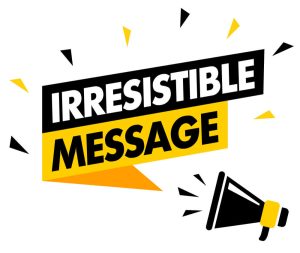How To Recruit Independent Insurance Agents to Your Downline
- December 18, 2022
- 3 min read
- Recruitment
How To Recruit Independent Insurance Agents to Your Downline
- December 18, 2022
- 3 min read
- Recruitment
How To Recruit Independent Insurance Agents to Your Downline
- December 18, 2022
- 3 min read
- Recruitment
Consider this article a follow-up or Part II to my article “How to Recruit Insurance Agents.”
I highly encourage you to study that article first, as it covers the foundational pieces you need to have in place to produce consistent success with recruitment.
If you dive right into this “how-to” discussion without having covered Part I, you likely will feel in the dark about a number of things. Thus, assuming that you have done that, let’s move forward with this blueprint for recruitment success, now focusing on independent producer recruiting.
The Three Major Keys to Success Recruiting Independents
 An effective message for your campaign: Whether you’ll work with a copywriter, a marketing team, or you’ll take the do-it-all-yourself approach, your campaign needs a compelling message and an offer that attracts the right producers and helps your team close prospects to contract and come on board.
An effective message for your campaign: Whether you’ll work with a copywriter, a marketing team, or you’ll take the do-it-all-yourself approach, your campaign needs a compelling message and an offer that attracts the right producers and helps your team close prospects to contract and come on board. - The right list of prospective agents: Depending on the kind of agent that is a good fit for your group – something that becomes crystal clear when you build your persona (explained in the article mentioned above) − you will need to prepare the right list of prospects for your campaign.
- Adequate closing and follow-up: We will explain and show you that moving a qualified prospect from the point of initial interest all the way to contracted and writing business through your downline can take a set of twelve steps. Deviating or not following up on these steps can cause you great expense and less-than-satisfactory results with recruitment.
Crafting an Irresistible Message for Agent Recruitment
When recruiting independents, you must keep in mind that most have existing relationships with at least one agency, could be writing business through different insurance marketing organizations (IMOs), and are using a few carriers already.
Indeed, IMOs targeting strong and already-active producers are looking at an audience that has been “around the block,” has specific expectations of you, and are familiar with a few of your competitors. They have been getting calls from them, too! 
Therefore, it is important that you avoid clichés and tired messaging in your recruitment campaign – messages like, “We offer great service and great back office support.” Independents say that most companies say exactly that, making it hard for them to differentiate among companies.
Don’t get me wrong, exceptional service and good back-office support sure is vital; however, those will prove more effective in retaining producers rather than attracting new ones.
The truth of the matter is that without a strong reason WHY, agents won’t contract and write business with a new downline. You will be able to come up with a compelling message if you can answer this question: What change can you bring about in the agent’s business or career if they join your group?
Clarifying the Value You Bring to the Market in Three Powerful Steps
Think of the agent you wish you to recruit – I remind you once again to study sections “How to Use the Agent’s own Vision in Recruitment” and “How to Build a Recruitment Persona and Avoid Expensive Ineffective Recruitment” in this article’s prequel “How to Recruit Insurance Agents,” also available in this blog.
Marketing expert Ryan Deiss writes: “The value your company provides is far greater than the products or services it sells. In fact, people don’t buy products or services at all; instead, they buy outcomes.”
In other words, the value your organization or agency brings is not a product, or the commissions you pay, or the back-office services you provide, or even your marketing support, as much as it is the change in your client’s business, career, or personal life that happens as a result of joining your team. Take a minute to digest that important datum.
 I am talking about a shift from a “before” state to an “after” state. But enough of theory. It’s time to roll up your sleeves and document these before and after states, as well as how your group helps people shift from one state to the other. It takes three steps.
I am talking about a shift from a “before” state to an “after” state. But enough of theory. It’s time to roll up your sleeves and document these before and after states, as well as how your group helps people shift from one state to the other. It takes three steps.
Answer the following questions as you prepare to craft your campaign message.
Step One – Define the “before” state in your prospective agents:
- What problems are they facing currently?
- Are there specific challenges that their current agency, IMO, or carriers are not helping them with?
- What is their most pressing crisis?
- What change in their life or business do these agents desire most?
- What barrier − real or simply perceived as real by them − is preventing them from bringing about change?
- What makes them keep their options open? What are they hoping could eventually happen in their career as an agent?
Step Two – Define the “after” state:
- What − in the words of the agent you seek to recruit − does success look like?
- What changes in their business or personal lives they would they consider a great outcome, if they were to come on board with a group like yours?
- How would that make them feel?
- On interviewing producers that had success with your group, what difference did your group make, what worked out because of joining you, or what made them happy?

Step Three – Carefully describe or work out how your group helps agents make a shift from “before” to “after.”
You are liable to end up documenting multiple success stories and testimonials along the way that could tell a story as part of your campaign. People really respond to genuine stories, even anecdotal successes from other agents like them. This will help you get the message out in your campaign.
How to Succeed with an Agent List
To promote your opportunity to independents, you need a list of licensed agents.
You will find that there is a correlation between how many qualifications your prospects need to have to be able to join your group and how sophisticated the methods to curate and segment your list needs to be.
In other words, if you can onboard anyone with a license as long as they’re interested, possibly any list of licensed agents will do. But if, say, you need agents experienced in certain markets and especially if you have production requirements – for example, you only recruit agents and advisors who are already writing a certain amount of business on a routine basis – the more advanced your list segmentation has to be.
 Various options exists out there to get a list of licensed agents. Segmentation offered or even built-in with a data platform are usually based on the following criteria:
Various options exists out there to get a list of licensed agents. Segmentation offered or even built-in with a data platform are usually based on the following criteria:
- License type (life, health, P&C, securities license, etc.).
- Geographical target.
- Independent/captive status.
- Years in the industry.
If you will target producers without a long list of qualifications and requisites, those data points are more than enough.
Let’s say, however, that you are an IMO that focuses on indexed universal life (IUL), for example, and you will only work with producers already at a certain production level in target life premium. In that kind of situation, that criteria alone won’t get you there. Segmentation based on company affiliations can be but is not always a solution. For example, you may access a list of agents who are appointed with certain carriers known to sell indexed products; however, those same carriers could very well be underwriting many other products, including final expense. So as you can see, you could end up targeting producers in a completely different market than the one you are in.
Therefore, to put together the right list of prospects, you need to determine two things:
- Exactly who your ideal prospects are, including all of your preferences.
- What are the minimum qualifications you are willing to set for a recruit? Because not all prospects are ideal, you need to determine what your “entry level” is, or what the “minimum requirements” are for you to on board an agent.
The right “agent list” for you to target would then need to include both the top and bottom levels.
Companies recruiting exclusively top producers, or “A-listers,” will end up generally facing two options. One, their team will have to engage all incoming leads or prospects and be prepared to vet and discard many. Or two, they could export the function to a professional company with sophisticated methods of list segmentation and lead generation. This way, their team will focus on vetted and qualified prospects, rather than prospecting, sifting through the many that won’t make the cut.
A Multichannel, Multimedia approach
Your promotional message succeeds in the market when you promote repeatedly and in multiple channels.
 One-shot marketing doesn’t get you there. Expecting to send out a single postcard or a single email blast and get rows of agents raising their hands saying, “I want to sign up,” is not thinking strategically enough.
One-shot marketing doesn’t get you there. Expecting to send out a single postcard or a single email blast and get rows of agents raising their hands saying, “I want to sign up,” is not thinking strategically enough.
Successful promotional channels could include but certainly would not be limited to the following:
- Strategic brand exposure in publications or at industry events.
- Valuable written or video content distributed on social media and podcasts.
- Online or physical events.
- Direct-response mail.
- Engaging agents via telephone.
- Digital re-targeting using Google.
A proven approach would be an integrated campaign that plans on targeting prospects multiple times using a combination of channels where the audience is found.
What combination is best depends on your audience. For example, if you’re targeting financial advisors, LinkedIn would be a great channel to include. If you’re targeting newly licensed agents for the senior market, on the other hand, LinkedIn may not be your best channel. But you have plenty of other options.
An Offer They Can’t Refuse
Your campaign will involve a sequence of at least two components – marketing being one, with the purpose of engaging agents and prompting a conversation.
The second component is selling and closing. Realize that your marketing people may not be best suited to do the closing. We’ll discuss why and tackle the selling component in the next section, so let’s discuss promotion and marketing first.
 Marketing is designed to create want and elicit a response. It will need to lead with a compelling reason for your prospects to engage with you and start a conversation.
Marketing is designed to create want and elicit a response. It will need to lead with a compelling reason for your prospects to engage with you and start a conversation.
Your marketing component in recruitment, in other words, could take the shape of an event where you uncover a new selling concept to agents in that market. Perhaps your event features one of your successful producers sharing specific points that can be promoted as the reason to attend.
A campaign offer could consist of an invitation to learn about a new product just rolled into the market and the “call to action” in your marketing piece would be scheduling a telephone conversation to get the details.
Your offer could involve a free demo of your proprietary software or technology that helps agents overcome a specific challenge you know they deal with routinely. A simpler version of this would be offering concrete tips to help agents overcome the latest legislative or regulatory nightmare that the “powers that be” just rolled out to everyone’s dismay. Examples are many, but you get the idea – you need a reason to engage.
The key to coming up with a compelling offer is to have an understanding of your audience and to be familiar with what is going on in your market. You want to avoid offers that are too similar to every other competitor. Understand that, even if you are offering a very similar service to competitors, you must emphasize a difference or a unique angle that will create interest in engaging your group in particular.
Insurance agents respond greatly to like-minded people. If you are a smaller agency or your company is just starting, perhaps your strength is that you are still a producer out there making things happen. Featured correctly, that could very well be everything you need to create an irresistible offer. A successful producer with a unique-enough system who is willing to coach and help others not just navigate but thrive in the current market may land you more prospects than you could talk to!
Putting together the marketing pieces for your message and offer could require a good copywriter.
If you do your homework and line up all the data this article recommends, hiring one will be much more cost effective for you, and your campaign will launch faster and more effectively.
After you get in front of qualified prospects, the final part of the game begins – closing and activating new producers.
Twelve Steps to Your Final Destination
Over the course of many years of helping brokerage agencies, marketing organizations, and carriers recruit independent agents, I’ve seen stark differences in results and recruitment R.O.I. different companies get even with very similar markets and almost identical opportunities or value propositions being promoted to agents.

For some time, I wondered why some companies just got much better results than others. I discovered the answer is in the 3% rule. Marketing author and recruitment expert Jeremy Miller has published this research and a variety of other successful marketers have covered it as well.
As measured by research, there seems to be a pattern where only 3% of individuals in any given market are “buying now.” This top 3% have already done their homework and made a decision to take action.
An additional 7% have the intention to make a change, but for various reasons, they are not as pro-active as the upper 3%. It will take a sustained effort and salesmanship on the part of a closer.
The 3% above may be that “low-hanging fruit” recruiters crave, but unfortunately, is not everybody. Still, the combined upper 10% in a market is very closable if you do adequate follow-up with them. It has been found that it may take up to twelve follow-up conversations before they decide to take action. The question is, how quickly will your recruiters give up and stop following up with qualified prospects?
The remaining 90% split into three segments of 30% each. The first 30% is composed of people in your market who likely have a need for your services and are open to discussing your services, but lack a pressing reason to act now. That could manifest as agents open to making changes in the way they do business and like your value proposition, but perhaps do not have a case right in front of them that would require moving forward with contracting or make the investment needed, etc.
It doesn’t mean that the latter aren’t good prospects, or that they’re not qualified to work with you. It just means that they will require more follow-up and communication before they take action. You will find, however, that the lower 60% (see infographic) is a waste of your time.
The Big Mistake
Salespeople in general are notorious for doing poor follow-up with prospects. They give up too easily before they strike gold and close. Again, it may take up to twelve strong follow-ups and conversations with a prospect before he closes. Most sales people (we are talking about recruiters), however, only follow up one or two times with an agent and simply move on.
The mistake recruiters could be making is judging whether prospects are good or bad based on their readiness to act on your offer. Prospects must only be judged on whether or not they are qualified – whether or not they are the kind of agent you want to recruit.
The infographic above shows that different segments of your market will require a different amount of effort. If you or your team is only prepared to “close” the upper 3%, you will leave so much on the table and end up with much less R.O.I. that you could have produced with a more strategic approach.
The tendency to not follow up on a prospect not ready to act now is there, especially because frequently recruiters are not just responsible for contracting but also bringing in business. As humans, we can be like drops of water and take the path of least resistance. A recruiter will find it easier to make calls to existing producers to procure a new piece of business rather than work new prospects. The fact is, both actions must occur. Not following up enough is a big miss but a very common mistake.
Focus on Delivering Value Upfront

If recruiters are only equipped with a script and a questionnaire to size up prospective agents, a recruiting conversation could end quickly without much else to discuss. If an agent is qualified, but say, he or she doesn’t have the pressing need to contract immediately, your team will feel tempted to plug this prospect into some drip email campaign and forget about him or her.
A more strategic approach would be to have enough material, pertinent content, or free services that your recruiters could re-engage these prospects periodically with news, updates, or a free service. When your sales team is focused on delivering value to agents upfront, without having a requirement that they need to first sign on some dotted line, this can demonstrate your group’s expertise, competence, and focus on helping others.
This will make a huge difference and earn the trust of your prospects.
Over time, you will find that even agents who procrastinate will think of your group FIRST when the right time comes. After all, it was your team that cared, communicated, or focused on him, not your competitors.
 Relationships are really everything in this industry, and this approach will help you cultivate great relationships.
Relationships are really everything in this industry, and this approach will help you cultivate great relationships.
To sum up, recruiting is a big topic, and scenarios can vary tremendously depending on what market you are in and what kind of agent you are recruiting. Despite all of these variables, there are only a few very key components that will help you have consistent success. The top three are the following:
- Crafting an effective message and offer that is right for your audience.
- Putting together the right list of prospects, minding the number of qualifications you have for each recruit.
- Having and following a strategic approach when engaging prospects, one that will focus on delivering value upfront and that includes an adequate amount of follow-up, so you will close more of your prospects and get more agents writing business.
Stu Gramajo
CEO and Director of Market Research
Agent Link
Categories
- Martketing (2)
- Recruitment (4)
- Sales Techniques (1)
- Technology (1)
- Uncategorized (1)




